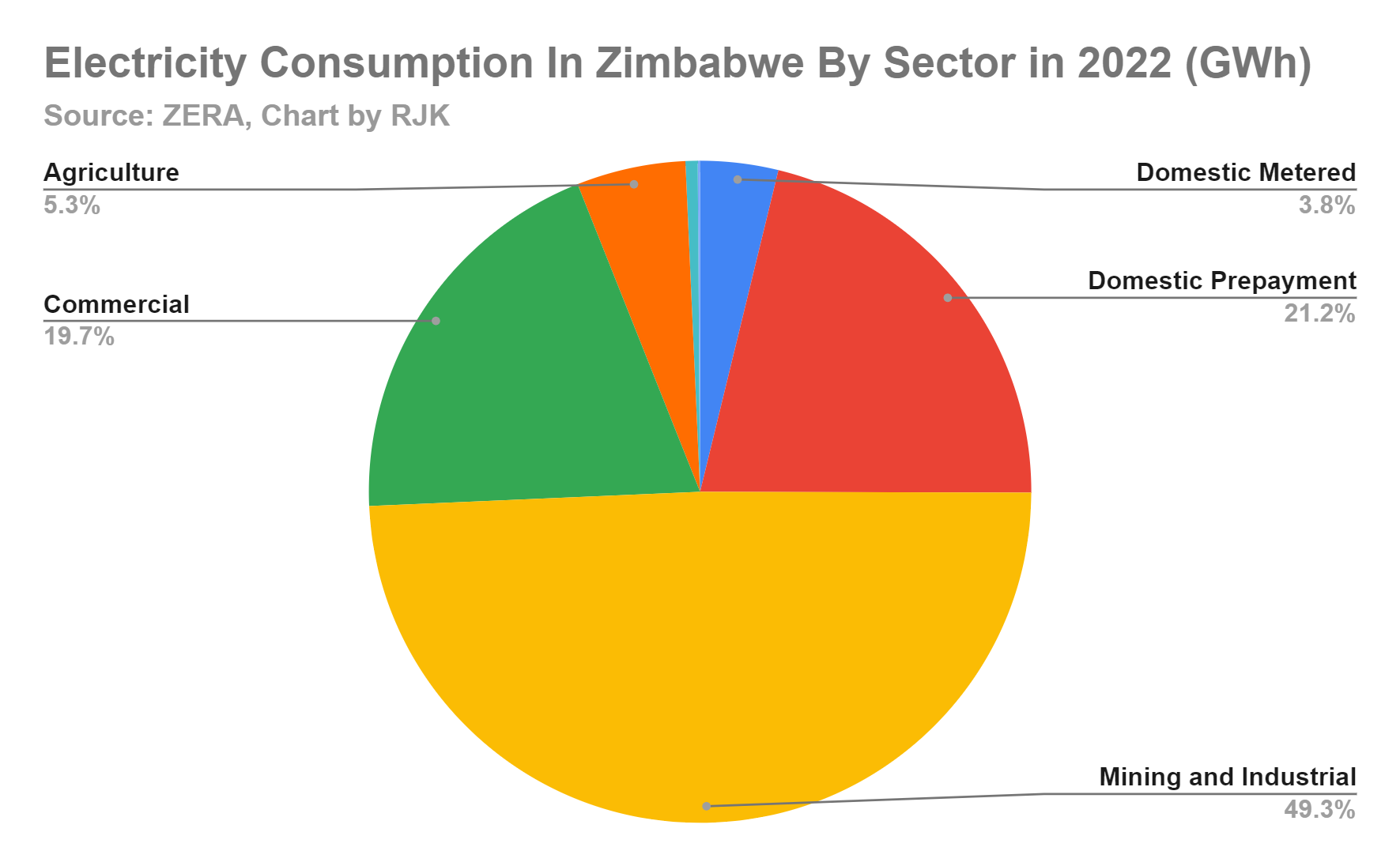Sign up for daily news updates from CleanTechnica on email. Or follow us on Google News!
The commercial and industrial sector combined with the mining sector make up 69% of electricity demand in Zimbabwe according to the latest report from Zimbabwe’s energy regulator, ZERA. The Zimbabwe Power Company (ZPC), which is the national electricity generation company, recently completed the construction of two 300 MW coal-powered units at Hwange (Hwange Unit 7&8). With the addition of these two new coal plants, the country’s installed generation capacity has gone up to around 2,800 MW.
Recently, when the two new units were added to the mix, the ZPC reported a generation output of around 1,600 MW to 1,700 MW. However, generation now regularly hovers around or below 1,300 MW, mainly due to power performance of the old thermal units 1 to 6 (installed capacity of about 920 MW) as well as the phased ramp-up/commissioning of the new units 7 and 8, resulting in prolonged periods of load-shedding as the country has a peak demand of close to 2,000 MW. The country’s national utility company, ZESA, also announced a while ago that it has received applications for new connections from the mining and industrial sectors for about 2,500 MW. This means Zimbabwe needs to add a lot of generation capacity ASAP!

As Zimbabwe battles to meet electricity demand due to several factors, including the poor performance from aging coal power plants as well as low water levels at the country’s 1,050 MW Kariba Dam hydropower plant, more large consumers are moving to complement what they receive from the power utility with their own onsite solar PV. Last year, Caledonia’s Blanket Gold Mine installed a 12 MW solar PV plant. Now Dallaglio’s Eukera Gold Mine, situated in Northern Zimbabwe in the Mashonaland Central province, approximately 150km northwest of Harare and 4km southeast of Guruve town, is getting a 7 MW solar PV plant.
The open pit mine which is currently being exploited at Eureka has 10.3 million tonnes in ore reserves containing approximately 450,000 ounces of gold, at an average grade of 1.36g/t, delivered to the plant. Dallaglio adds that the CIL plant has a processing capacity of 112,000 tonnes/month and produces 130kg of gold from the open pit every month, which is planned to continue up to the year 2032 before transitioning to an underground mining method below 300m. Eureka Gold Mine is owned by Delta Gold Zimbabwe (DGZ) and is one of the largest gold mines in operation in Zimbabwe. DGZ was acquired by Dallaglio in 2018. Dallaglio says it is investing US$60 million in Eureka Mine to bring it back into production.
Once operational, the 7 MW plant is expected to save thousands of tonnes of carbon emissions over its lifespan, substantially cut energy costs for the mine, and enhance the reliability of its power supply. Solarcentury Africa will be overseeing the project’s design, development, financing, construction, and operation phases, with financial closure anticipated early next year.
James Beare, CEO of Dallaglio, said, “the Partnership with Solarcentury Africa is an important sustainability step for us, it reduces our cost of production and by outsourcing the project development to Solarcentury Africa, it allows Dallaglio to focus on our core business.”
Jason De Carteret, CEO of Solarcentury Africa, remarked, “We are thrilled to announce our partnership with Dallaglio, marking a significant milestone in our mission to develop a renewable asset portfolio in Zimbabwe and the surrounding region. We applaud Dallaglio for their dedication to sustainability and express our gratitude for entrusting Solarcentury Africa with the responsibility of delivering this project.”
It’s great to see more large energy consumers adopting solar. This will go a long way toward meeting some of their consumption during the day, relieving some pressure on Zimbabwe’s constrained grid. I hope we will start to see more of these large projects also adding battery storage. Batteries could be charged overnight during off-peak periods and then complement the load during busier hours, depending on the load profile of the energy consumer.
These types of deals that attract private capital into the power sector, complemented by electricity wheeling, could really help add some much needed renewable, clean generation capacity to the energy mix to complement existing generation plants. As more of these types of solar plants are added to the mix, it could also help ease the burden on Kariba dam during the day which has been doing some of the heavy lifting over the years, leaving room for the large dam to assist in peaking applications over time.
Image of mine courtesy of Solarcentury
Have a tip for CleanTechnica? Want to advertise? Want to suggest a guest for our CleanTech Talk podcast? Contact us here.
Our Latest EVObsession Video
I don’t like paywalls. You don’t like paywalls. Who likes paywalls? Here at CleanTechnica, we implemented a limited paywall for a while, but it always felt wrong — and it was always tough to decide what we should put behind there. In theory, your most exclusive and best content goes behind a paywall. But then fewer people read it!! So, we’ve decided to completely nix paywalls here at CleanTechnica. But…
Thank you!
CleanTechnica uses affiliate links. See our policy here.



